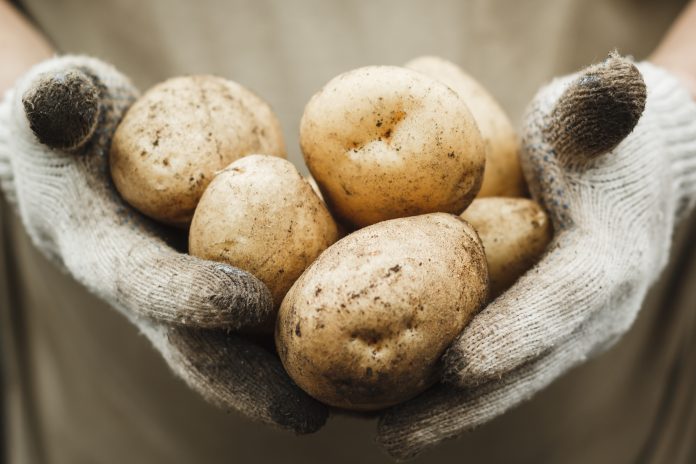Jonathan Minchin discusses developing technology towards sustainable farming practices: Learn about robotics for microfarming with a new generation of farmers
A new generation of farmers are starting small innovative market gardens in rural, peri-urban and urban areas across Europe.
These farms often grow polycultures of up to 100 different varieties per year on small surfaces of less than 5 hectares. Polyculture and organic microfarms are proving to be highly productive, sustainable and economical, they are therefore tools to cherish for sustainable development in agriculture for the future.

ROMI is a four-year Europe-funded H2020 research project committed to promote a sustainable, local, and human-scale agriculture. It is developing an affordable, multipurpose platform constituted of robotic tools, data, software and shared documentation to help farming communities increase their production and improve their working conditions. ROMI is developing a range of interoperable robotic tools: a land-based robot, aerial robotic tools including a hung cablebot for polytunnels, a drone for crop monitoring, and a 3D scanner for phenotyping in indoor and outdoor environments.
Small organic farms, a scalable business in Europe
One can observe a significant trend in the evolution of farms in European agricultural systems: an increasing number of larger farms on the one hand, and of micro-farms (< 5 ha) on the other hand. To date, these latter represent the vast majority of European farms, as 81.6% of holdings in EU-12 have less than 5 ha of UAA – utilised agricultural area – 54.5% in EU-15. Micro-farms can be economically profitable: a recent study, published by AgroParisTech (France), demonstrated that 1000 m2 of cultivated surface can generate a harvest with a sales value of 57,300 euros, with 1600 hours of work invested.
Micro-farms enable feeding local populations
With the help of technological progress, we can expect an increase in agricultural productivity. Precision farming weighs $2.8 Billion in 2015 and is expected to grow by 12%/year. Yet this innovation, currently benefits only the fewer and larger farms and further isolates micro-farms, which mainly use traditional farming methods where a lot of work is done manually, resulting in physically challenging work conditions. Due to the incompatibility technologies of scale, tractors are not a viable option in such small surfaces and are not adapted to manage the complexities of multiple crop types on the same field.
The challenge is to make diverse cropping easier and to reduce the manual work so that micro-farms can grow, diversify activities and remain sustainable. There is a strong need to provide them with accessible cheap and easily usable tools and solutions.
Robotics make managing diversity easier
The team behind ROMI believe that computation and mechatronics have now reached a point of sophistication and cost-effectiveness that they are capable of handling the complex strategies of polyculture farming. Entering into its third year of research ROMI is adapting and extending state-of-the-art land-based and air-borne monitoring tools and will release a light-weight, low-cost and versatile robotics platform that is modular, affordable and easy to use.
The land robot developed by Sony Computer Science Laboratory is able to both monitor and work at crop level. When coupled with aerial robotics, the cablebot and drone developed by the Institute for Advanced Architecture (IAAC) and Noumena team, these robots constitute a platform that is capable of acquiring a detailed multi-scale picture of the crop development from individual sample plants to a global picture of the cultivated terrain.

The project is testing a new strategy to monitor, interpret and predict crop development by combining high-throughput data coming from the robot’s cameras and computational models of plant growth. The project is working on advanced 3D plant analysis and modelling techniques for indoor and in-field data acquisition. The ROMI team also needs to go beyond the state of the art in outdoor phenotyping, in order to extract biologically relevant information for farmers.
Computer Vision and Active Vision for in-field Phenotyping
To this end, the Adaptive Systems group at Humboldt University in Berlin is working to implement in robots the principles for continuous, autonomous, open-ended learning processes, an A.I. that is driven by intrinsic motivation and curiosity. These principles will be the basis for the active vision module that is able to position the camera and maximise the useful information in the acquired images. Combining active vision for in-field phenotyping would be a breakthrough in how formal modelling can be coupled with deep learning techniques.
The MOSAIC group at Inria is leading the field of formal plant modelling and provides expert knowledge on the reconstruction of the plant structure from raw data (images, point clouds). Inria has been working for many years with the Reproduction and Development of Plant laboratory at the CNRS in Lyon. The geometrical parameters that are extracted from the in-field plant measurements may give new insights on the relation between the plant’s phenotype and the underlying ecophysiological and genetic processes.
In fact, it would put the traditional work method in molecular biology on its head: instead of analysing a small number of model plants in highly-controlled environments and then seeking for ways to apply the insights to outdoor farming practises, this project allows them to analyse large data sets that come from farms and seek to bridge phenomena observed by farmers to insights from plant sciences .
The potential is huge and scalable
The use of computer and active vision, informed by virtual plant modelling for in-field phenotyping, will not only support farms by providing comprehensive crop monitoring and prediction tools, but the same data will also form the basis for accurate application of numerical control (CNC) robots at multiple scales, The precise movements and placement of the tools in complex planting arrangements will assist farmers in repetitive yet highly dexterous tasks. ROMI’s weeding tool will save farmers 25% of their time.
ROMIs applied research is directly driven by the expertise of professional farming communities, and are field-tested across four seasons at two core sites: Chatelain Maraîchage near Paris and at Valldaura Self-sufficiency Labs near Barcelona. All outcomes of ROMI will be made accessible under an open hardware/software licences, encouraging a community of users to propose, customise and develop additional functions that follow farm specific requirements.
Based on these computational and robotic tools, disease and stress detection, planting, harvesting, watering, soil and genetic sampling may be further applications. We expect that the project will indeed establish a unique proof-of-concept pushing to the generalization of data-sharing between scientists and farmers exploiting microfarms.
Acknowledgements: ROMI has received funding from the European Union’s Horizon 2020 research and innovation programme under grant agreement No 773875.
*Please note: This is a commercial profile











